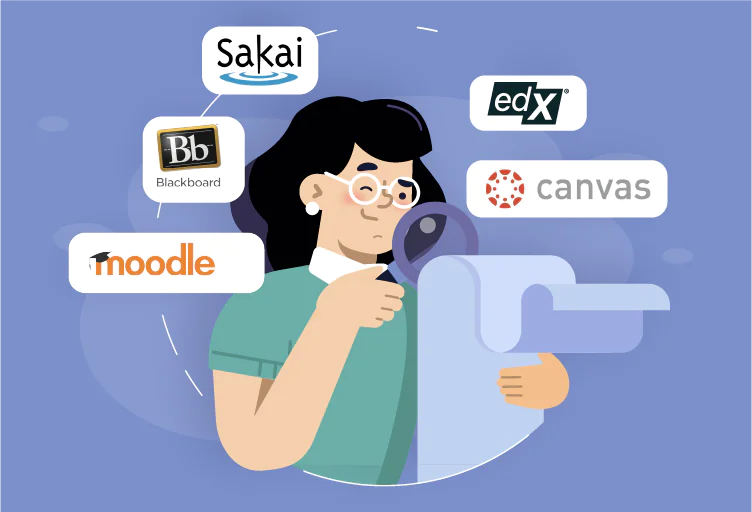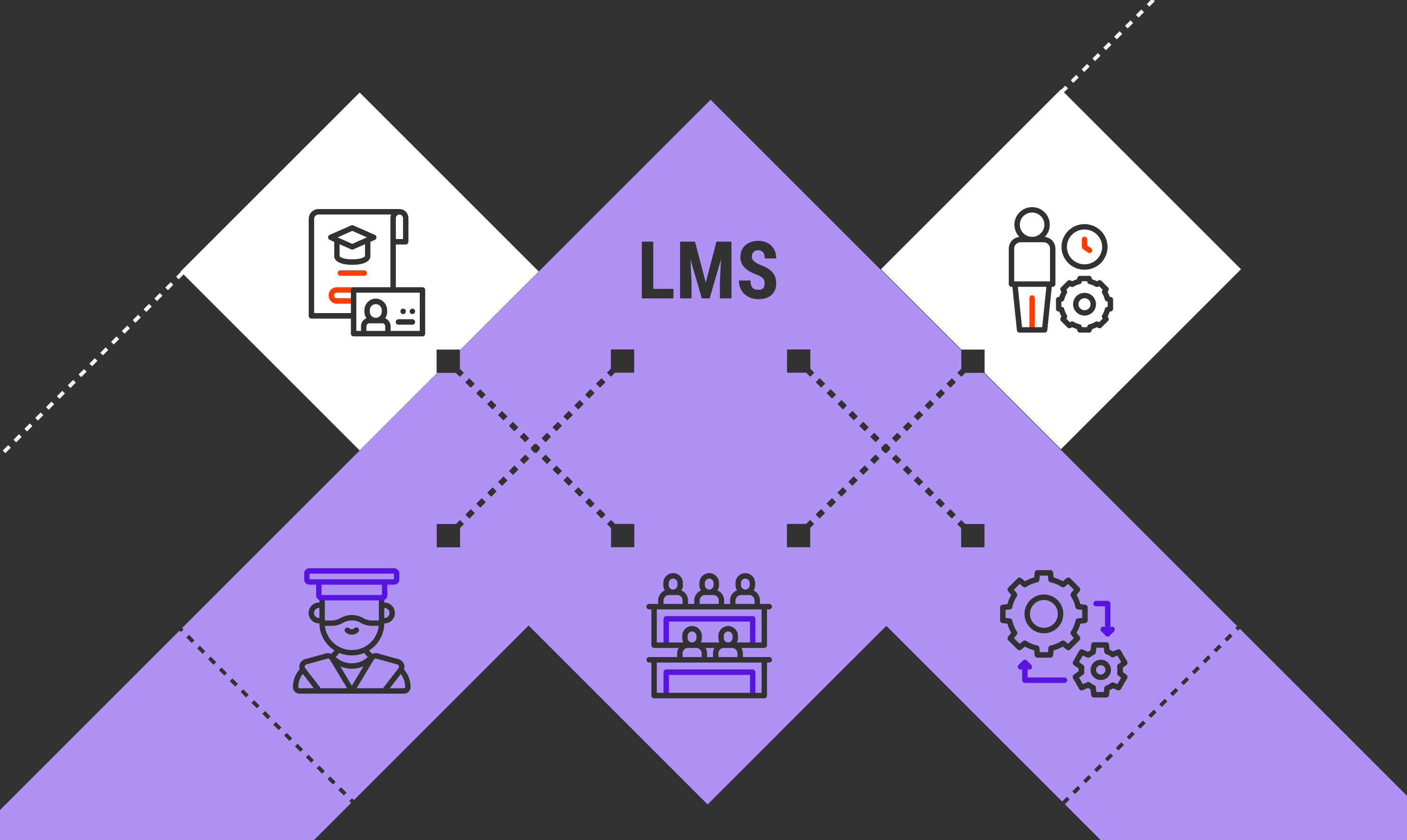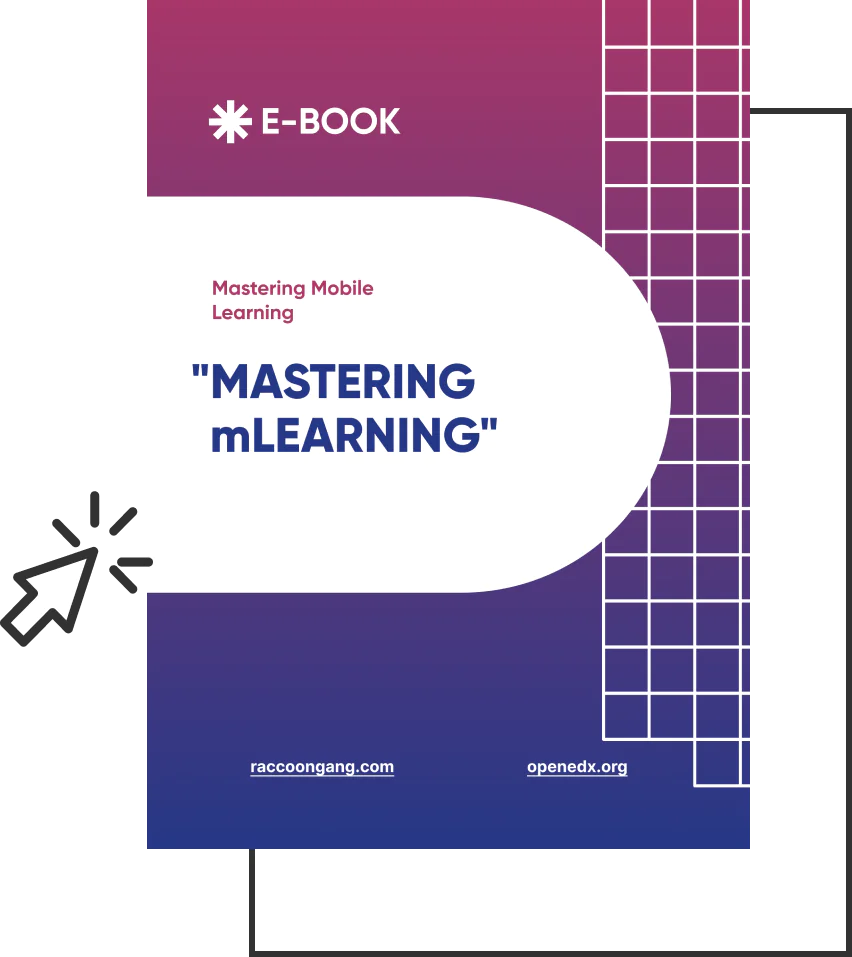The biggest challenge is to ensure consistency and uniformity in training content for learners from different parts of the world. Let’s dig deeper into how to create online courses for geographically dispersed learners.
Step1: Understand Your Targeted Learners
Multicultural teams are made up of people from different backgrounds, cultures, etc. This diversity leads to a lot of differences between team members. However, they do have some characteristics in common, which is why they’re part of a single organization. The first step to creating online courses for international audiences is to identify those similarities.
The simplest way is to consider why each learner is looking to participate in your online course. There must be some motivation behind the decision and one or more goals to achieve. Identify and note them down. This information is going to be particularly insightful when you go on to develop the course. The goal could be anything, from acquiring a skill to achieving personal growth or solving a work-related problem.
To discover the similarities between audiences, research your audience by conducting polls, surveys, and virtual focus groups. Then, use your findings to develop learner personas that may include experience levels, interests, proficiencies, etc. Now you’re ready to create online courses tailored for geographically dispersed learners.
Step 2: Identify Their Online Training Needs
In many cases, virtual training programs aren’t taken seriously by learners. This may not necessarily be due to apathy or boredom. Perhaps the problem exists in the structure of the learning course itself. Your online course may be too dull, dry, or dense to retain learners’ attention or relies on the content your audience is not interested in. Or, maybe the learners can’t see how the program can facilitate career growth or it offers something learners already know. This is even more common when learners are located in different parts of the world.
Therefore, for dispersed learning, it’s critical to not just know your target audience but also identify their needs before creating the course. You can simply conduct LMS surveys or polls on social media to determine their learning preferences.
An even better way is to set up an anonymous online portal, requesting learners to share ideas and suggestions. If appropriate, connect with each employee or potential learner individually via email, phone, or any other medium. When the course is ready, don’t forget to clarify how the program will help them in their jobs or career path.
The objective of this step should be to bridge the gap between the online course design and learners’ needs. Motivation and incentives from learners will eventually follow.
Step 3: Seek Advice from Local Subject-Matter Experts
One of the most effective techniques to create online courses is to obtain insights from subject-matter experts in each of the regions your learners are located in. They possess considerable knowledge about the local eLearning trends, regional regulations, cultural norms, dispersed learning, and any issues that must be considered while developing a training course. For instance, they can help you decide what type of images and visual elements are suitable for that culture and what you must do to ensure compliance with local laws.
With so many social networks available, approaching subject-matter experts shouldn’t be a problem anymore. You can easily find eLearning experts on LinkedIn or profiles and groups on Facebook and Twitter. Many of them are willing to offer advice on how to create online courses to establish themselves as industry leaders.
Step 4: Leverage Localized eLearning Course Templates
An easy way to create online courses for geographically dispersed audiences is to find and use the right localized eLearning templates. This measure can be particularly useful if localizing is too stressful in your case. For example, if your remote learners require different skills and information or speak different languages, it makes sense to develop different versions of your eLearning course for each group.
However, developing each different version from scratch can be hectic and time-consuming. Using corporate eLearning templates is a viable solution to this. All you need to do is develop a standard layout with placeholders, leaving ample room for any extra space for translations or culture-specific eLearning content. For instance, certain languages require more space than others, so if you tailor the course design to a single language, you risk facing a shortage of space for languages that occupy more room. To avoid this, leave some white space on each page so that the master template can work for each language.
Since language is the biggest differentiating factor between different audience groups, consider developing a plan to accommodate different languages in your eLearning course. Determine how diverse your team is and list down the locations that have English as the first language. Then find out if anyone from other countries is part of your targeted learner group. The number of learners for each group will help you decide whether you should be focusing on dominant languages, such as French, Italian, or Spanish.
Once you know which languages you have to focus on for your eLearning course, think about how you’re going to translate the content. Instead of using auto-translation software, consider investing in an LMS that supports multiple languages.
Remember, you need to create online courses that simplify the translation process and the deployment of various versions. To make things easier for yourself, you can use geolocation technology. It will automatically display content tailored to a learner’s locality and give them an option to choose the language based on their personal preference.
As a second option, you may plan to translate all course content into represented languages. To adapt the course to different contexts, branch scenarios, and transpose simulation, add localized examples to create relevance.
Developing an adaptive template involves including specific branding colors, elements, themes, schemes. Besides, various eLearning authoring tools come with built-in themes and layouts. They can further help simplify the process.
Step 5: Use Visual Representations
Another great strategy to create online courses is to leverage visual representations in modules. At times, the subject matter loses meaning in translation, confusing for remote learners. Visual representations are an incredible solution to this. They improve comprehension and inference by dispersed learners. They may include images, graphs, infographics, or charts.
Develop a master or standard version of the template with only graphic content, and switch out the text space with different languages.
When you design the master version, don’t embed text into visual elements. This way, you won’t need to redesign the entire graphic when localizing the template. This particularly applies to infographics. If it includes English text, the visuals may need to be changed when translating into another language, such as French.
Also, make sure you take into account the cultural significance and sensitivity of the graphics and images you use. Some images can be useful in some cultures, but offensive in others. Of course, you want to make a strong impact on dispersed learners.
The visual elements in your course shouldn’t diminish the online learning experience or spark negative controversy in a particular location. The local subject matter experts should be aware of the norms and taboos that exist in a society. Before you create online courses, Ask them to examine every media element, image, and graphic you intend to use in the course design and raise any objections where required.
Anyhow, incorporating graphics into your online course content should help your diverse audience better understand the course content, thereby facilitating effective learning.
Step 6: Include Captions and Subtitles
Many companies and educational institutions create online courses with audio. If your eLearning course contains audio, adapting it to meet each audience’s needs could mean re-recording the script for each language. This can be impractical if too many languages need to be covered. For dispersed learning, you want to make things easier.
A simple solution is to get the script translated into the required languages from professional translators and deliver audio content in the form of subtitles and captions in the course. This way, you can even accommodate the audience with special needs, such as those who are slow to grasp things or have impaired hearing.
To develop meaningful translations, hiring professional translators is important. They’re aware of all the nuances of the language they’re proficient in. It will be a one-time cost and will pay off.
Step 7: Consider the Context
Corporate tasks are greatly influenced by the target, location, and scope. While most roles require good communication skills, nature and complexity can greatly vary from one role to another. For instance, a delivery man or driver may only need to strike spontaneous conversations or talk when required, but the role of a manager involves a different level of communication. The latter may be called to address media interviews or deliver inspirational speeches.
Hence, when you create online courses, make sure you take into account the context of each of your targeted groups in light of the skills they need. The modules should be easy to search and employees should be able to skip the ones that are irrelevant to their role.
Step 8: Provide Resources from Social Media
Consider offering a personalized support system to your dispersed learners. One great strategy to ensure this is to offer social media groups, video sharing, and online discussion platforms. The platforms should help them obtain feedback from others or help their peers in different parts of the world. They also prove valuable for teams doing collaborative work.
One of the best features of social media is that you can easily find like-minded individuals either directly or through groups. Thus, learners can find people with similar interests and those who can address their training concerns.
What you can do is create separate forums or social media groups for different audience groups. This way, it will be easy for participants to work toward a common goal and learn from each other.
Closing Thoughts
To wrap things up, geographically dispersed learners belong to different cultures and have unique online learning needs. Yet, it is possible to provide each learner with the skills and insights they require to improve their effectiveness and achieve career growth. The above-explained steps to create online courses for multicultural audiences should be of great help.
Depending on the level of diversity among your learner audience, the process can be highly complicated. The slightest mistakes can greatly damage your brand image or reduce the value of your eLearning course. An experienced eLearning development company such as Racoon Gang can help you in this case. Using the Open edX platform, we offer flexible online learning solutions for your diverse audiences.
Click here to obtain a personal quote or get in touch with our experts by visiting our contact page.
-
66830 12/Sep/2019
-
59848 27/Mar/2018
-
54741 13/Mar/2020
-
12180 06/Jun/2018
-
49 10/May/2024
-
320 24/Apr/2024
-
531 28/Apr/2023
- Step1: Understand Your Targeted Learners
- Step 2: Identify Their Online Training Needs
- Step 3: Seek Advice from Local Subject-Matter Experts
- Step 4: Leverage Localized eLearning Course Templates
- Step 5: Use Visual Representations
- Step 6: Include Captions and Subtitles
- Step 7: Consider the Context
- Step 8: Provide Resources from Social Media
- Closing Thoughts










